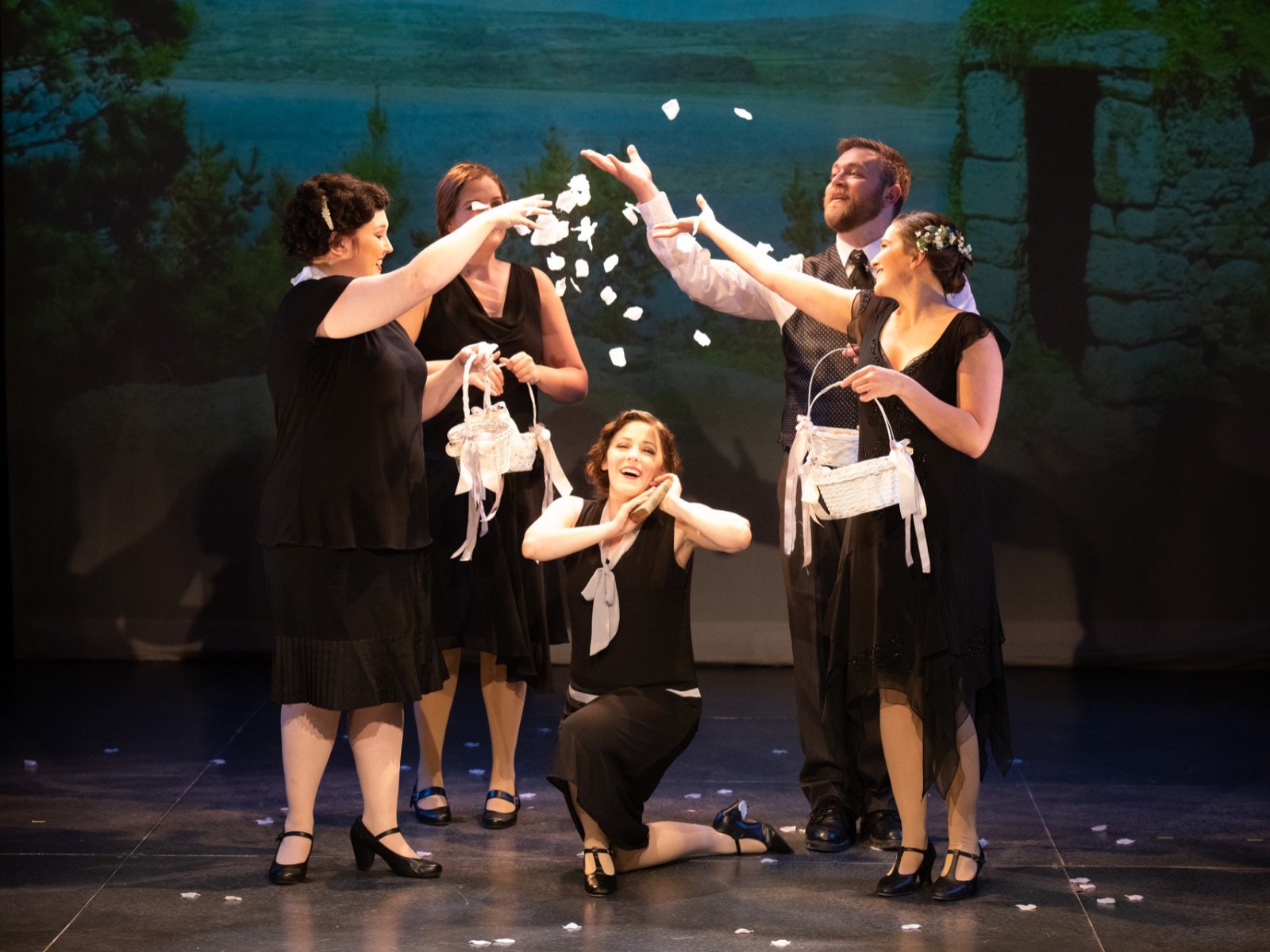On opening night of Milwaukee Opera Theatre/Skylight Music Theatre’s production of "Ruddigore, Or the Witch’s Curse," co-director Jill Anna Ponasik summed up her unorthodox take on the lesser-known Gilbert and Sullivan comic opera, set in the world of melodrama and silent film: "We went way out on a limb. Again. Of course."
And once again, it works in delightful, startling and comical ways.
As the producing artistic director of Milwaukee Opera Theatre, Ponasik is known for her break-all-the-rules creative strategy that invigorates old chestnuts while honoring the music at their center. This has definitely paid off in the past, with inventive reinterpretations that awaken audiences to the artistry of classic works by presenting them in surprising new ways. (Last season’s innovative "Carmina Burana" is a perfect example.)
Collaborating with Skylight Music Theatre and co-director Catie O’Donnell, Ponasik now leads a small but mighty cast of only 11 performers in presenting "Ruddigore" – mostly a cappella. By effectively removing the orchestra, this version of the bouncy 19th century comic opera impresses with accomplished and complicated vocal harmonies, newly arranged by music director Tim Rebers. Occasionally the cast provides their own accompaniment on guitar, violin, accordion and the celeste, a tinny, music box-like mini piano. But the majority of the soundscape for the show is created by the gorgeous voices of the lead players and a small chorus.
Another "out on a limb" production choice was the decision to move "Ruddigore" from the ornate and luxurious Cabot Theatre, where Skylight productions are usually staged, to its substantially smaller black box studio. The 99-seat theater has a flexible but narrow performing space – made even narrower by Shen Heckel’s production design, which adds a traditional burgundy main curtain and black "leg" curtains to both sides of the stage so actors can wait in the wings for their entrances without being seen. The result is a square, postage-stamp playing space that occasionally feels cramped when the entire cast is singing and dancing together. But with the addition of a glass chandelier hung over the celeste on the far right, it also approximates a miniature movie theater of the 1920s, when silent films were all the rage.
Since "Ruddigore" was written as a parody of Victorian stage drama, its stereotypes, sudden reversals, melodramatic plot points and general silliness are a great fit for the flickering, black-and-white world of early cinema. Using an array of standard Gilbert and Sullivan tropes, several sets of lovers are united, parted, lured away, reunited and finally married, to the delight of a chorus of bridesmaids who have been hoping to celebrate by throwing flower petals. Brothers and foster brothers reappear after long absences. And there is a witch’s curse that must be outsmarted, if not officially lifted, so that future Baronets of Ruddigore will not have to commit a new crime every day to avoid an agonizing death. Rest assured, it all ends happily.
As the delicate ingenue Rose Maybud, Susie Robinson is appropriately beautiful and foolish as she obsessively consults a book of manners to guide her every step. Her exquisite soprano propels her across the stage, flitting between potential beaux like a hummingbird. As her painfully shy suitor Robin Oakapple, the squeaky clean Doug Clemons also gives excellent voice to his many adventures and disappointments. He is particularly charming when interacting with his faithful servant, played to perfection by Karen Estrada. Consoling him with her accordion at the top of the second act, Estrada’s timing is flawless, and her expressive face stands in for several perfect punchlines.
Flowers at the ready, the bridesmaids (Katie Gruell, Edward Lupella and Megan McCarthy) are an inspired comic trio, with the two women’s voices augmented with Lupella’s warm baritone. Thanks to Ponasik and O’Donnell’s direction, the group is visually and musically much more interesting than originally written.
Costume designer Molly Mason does a lovely job pulling together (mostly) black and white costumes with silhouettes of the Roaring Twenties, complemented by pale makeup and Marcel waved hair for the women. Robinson looks particularly suited to this era. With the graceful gestures of a heartsick maiden on the silver screen, she’s a good stand in for Lillian Gish or Mary Pickford. Lighting designer Nathan Scheuer also employs the bright, flattening wash of footlights strategically to make some moments much more stark, per the medium.
There are very cheeky bits of stage comedy, goofy sound effects and just plain genius blocking that imbue much of the show with a ridiculous and playful vibe. The shadow play during a wonderfully awkward "will they or won’t they" conversation between the lovely Rose and Robin is a delight, as are a series of wilting red roses, presented to Diane Lane’s Mad Margaret as she sings a sad tale of heartbreak and her resulting mental instability. Karen Estrada’s herculean effort to tie up and carry off a village woman for her employer also provides great laughs.
Most of the production’s nod to silent movies is accomplished through Scheuer’s video projections, and while some succeed brilliantly – the opening sequence, complete with projector sound effects and title cards, sets the scene extremely well, as does the spooky prologue, where the cast looks like an Edward Gorey sketch come to life – others miss the mark. In the second act, video allows a wall of portraits depicting generations of disapproving Murgatroyd ancestors to spring eerily to life, like characters in an animated haunted house.
Music director/performer Rebers plays each stuffy uncle in the montage (as well as one of the ghosts in 3-D) with panache, but the contrast between the recorded and live performances was sharp and the video wasn’t always in sync with the sound. Also breaking with the silent movie’s visual theme, many photos projected in the background were in color, which was puzzling.
Small issues with pitch, pacing and tone will no doubt resolve themselves over the course of the run, making this off-the-wall production concept the best thing that’s happened to a silly Gilbert and Sullivan opera since talkies.







